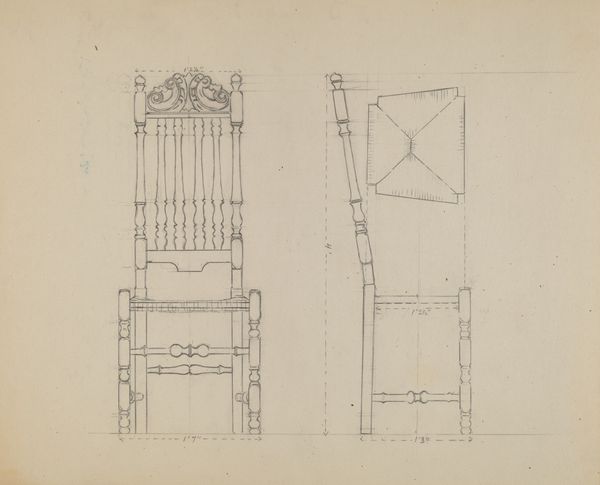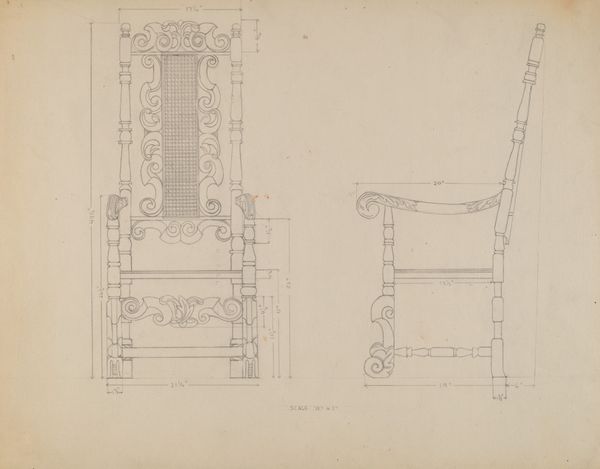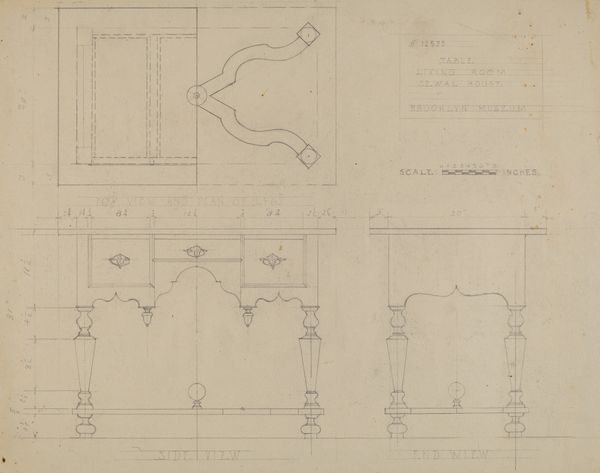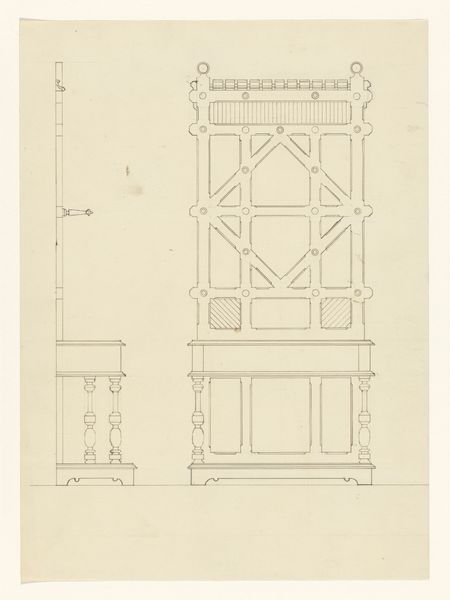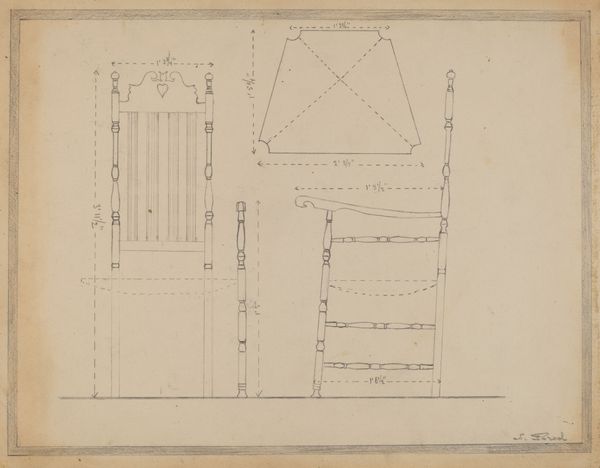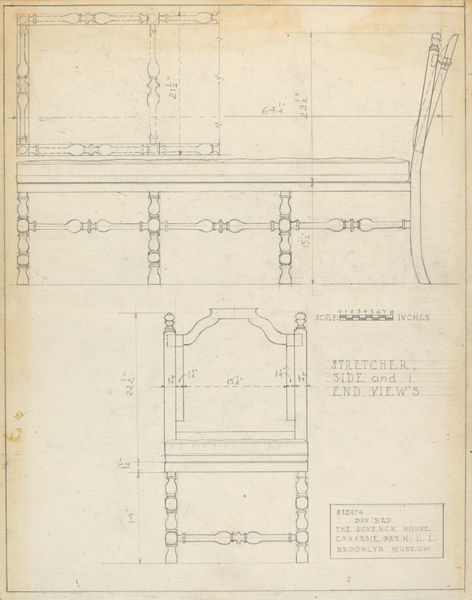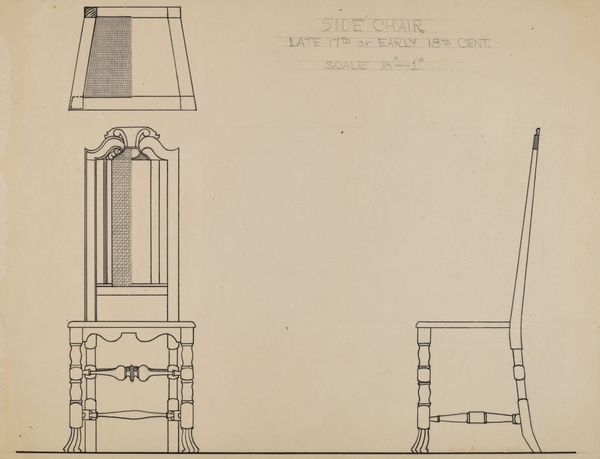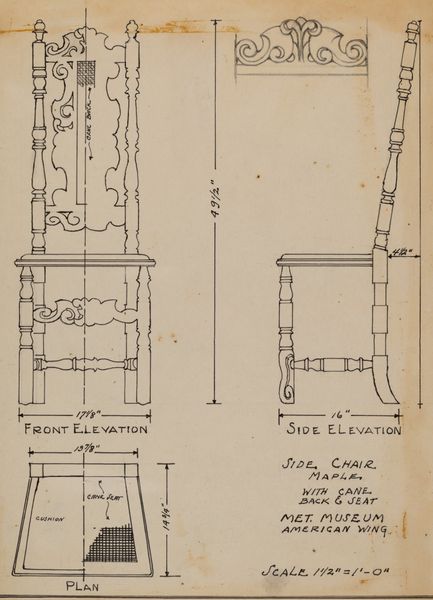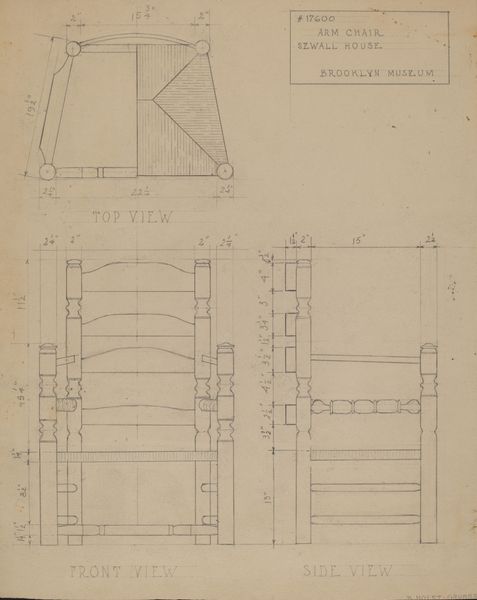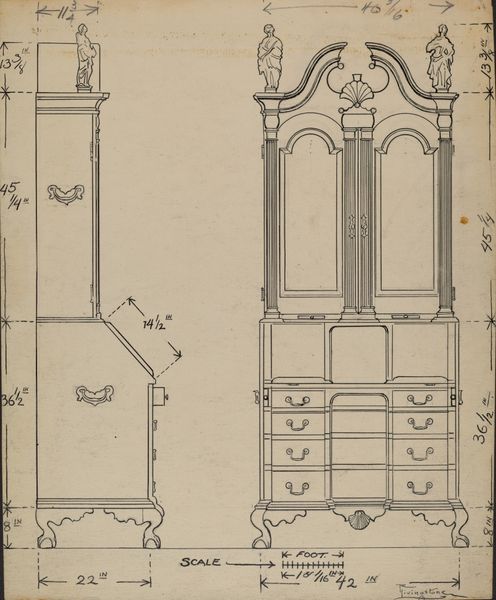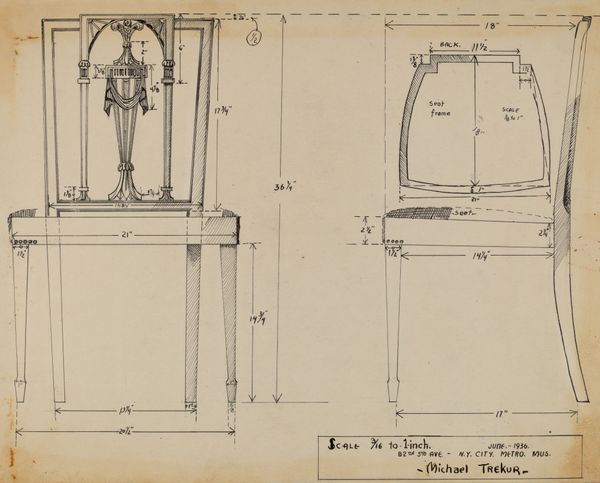
drawing, architecture
#
portrait
#
drawing
#
geometric
#
architectural drawing
#
line
#
academic-art
#
architecture
Dimensions: overall: 21.2 x 26.2 cm (8 3/8 x 10 5/16 in.) Original IAD Object: 49 3/4"high; seat 17 1/2"high
Copyright: National Gallery of Art: CC0 1.0
Editor: This is a drawing titled "Side Chair" from 1936 by Harry Eisman. It looks like a technical drawing or architectural rendering. What immediately strikes me is the contrast between the very precise geometric lines and the ornate, almost Baroque details of the chair design. What do you see in this piece? Curator: What I observe is a deliberate interplay of form and function rendered through line. Consider the semiotics of the line itself: hard, factual notations of measurement contrasting with the elegant curves defining the chair's back and legs. This visual dichotomy generates tension. Does it suggest a conflict between industrial pragmatism and artistic expression, typical for that time? Editor: That's an interesting way to look at it! I was just seeing them as different design elements, but framing it as a tension is insightful. Do you think the artist was making a statement about design philosophies? Curator: Possibly. One might explore the structuralist underpinnings here: the binary opposition of straight and curved, functional and ornamental. This creates a system of visual communication. How might that reflect broader societal shifts in attitudes toward design during the 1930s? Is the line itself the most prominent feature of architectural work? Editor: I hadn't thought about it in terms of binary oppositions. Now that you mention it, the grid pattern on the chair back also emphasizes that structural element. I see how the drawing isn't just a representation, but an exploration of design concepts through visual language. Curator: Precisely. By deconstructing the visual elements, we begin to uncover a deeper understanding of the work’s meaning. Editor: This makes me think of functionalism and art deco. The interplay between practicality and embellishment opens up new insights on that era of design. Curator: Indeed. I hadn't considered that perspective.
Comments
No comments
Be the first to comment and join the conversation on the ultimate creative platform.
